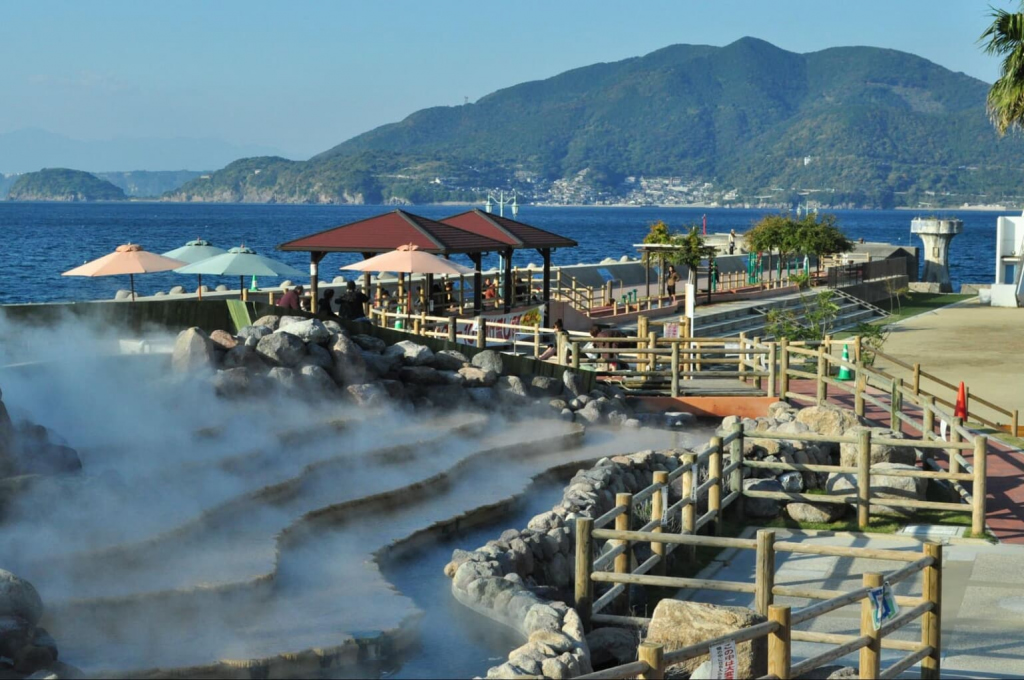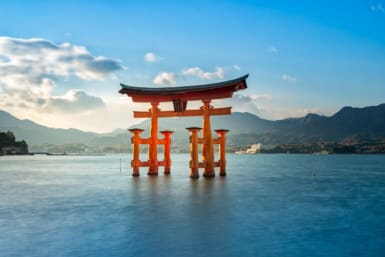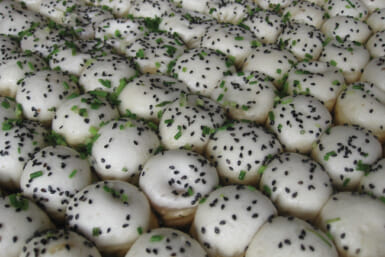Shimabara Peninsula as we know it today is the product of developments following the 1991 eruption of volcano Mount Unzen. While the event is perhaps the most well-known fact about the region locally and internationally, the reality is much brighter than you might first think. The eruption prompted a wave of revitalization and development initiatives that led to the growth of a rich local culture that lives in synchronicity with the surrounding nature.

At the Foot of a Fire-breathing Giant
One defining characteristic of the region is, of course, its volcanic landscape. Mount Unzen’s last eruption shocked the nation, though this did not stop the people of the Shimabara Peninsula from re-establishing their lives at the foot of the fire-breathing giant.
The Unzen volcanic area was declared a UNESCO global geopark, where visitors can get up close and personal with the natural geology. If you’re imagining a landscape painted in hues of gray, think again. You’ll find lush, colorful flora and several spots famous for their koyo (fall foliage), too.
The Shimabara Peninsula is blessed with a seemingly endless source of mineral-rich water. Water, as it turns out, played a big role in the development of local culture and customs.
There are a handful of well-known hot spring towns, including Unzen and Obama, which are a must-visit for those who love to onsen hop. Shimabara City is aptly nicknamed “the city of water” and showcases the region’s abundant spring water, which is also credited to the high volcanic activity and nearby mountain ranges. In August, the city hosts the Shimabara Water Festival, which celebrates the water that has run through the city since the times of the samurai.

Local Specialties Made With Shimabara Water
Plenty of spring water is bound to inspire some signature dishes that are nothing short of refreshing, in addition to being delicious. When visiting Shimabara Peninsula, there are a handful of local delicacies travelers must try.
In the savory realm, Shimabara Peninsula’s most notable contribution is hand-pulled somen noodles. This local specialty — and one that’s been a staple for over three centuries — is best known for its simple ingredients list, which includes regionally sourced spring water, as well as for its chewy texture achieved through a lengthy aging process.
Those who prefer to go straight for dessert should head out in search of kanzarashi, a Japanese dessert featuring sticky rice balls usually made with Shimabara spring water and bathing in a sweet syrup. For a workshop and a snack, you can try making your own at the Shimabara Yusui Museum.
As with many coastal Japanese towns, finding good, fresh seafood is a breeze. If you’re seeking hearty soul food instead, our top recommendation is Obama champon.
A History in Ruins
The culture of Shimabara Peninsula cannot be tied to one single event. Head to Shimabara Castle, where you can learn more about what used to be the Hizen Province (present-day Nagasaki Prefecture). Like other areas of Nagasaki, the region played a crucial role in the history of Japan — especially in relation to the country’s contact with the West. After the Shimabara Rebellion in the 1630s, Portuguese traders were driven out of Japan. The shogunate suspected European Catholics had been involved in the uprising and wanted to limit their influence on the locals.
If you’re heading to the castle, take a detour via Koi-No-Oyogu-Machi (often written as “Street with Swimming Carp” in English), where you can see colorful koi fish swimming down the narrow channels along the edges of the street, naturally filled with Shimabara spring water. As you wander, try to picture the samurai that strolled these streets only a few centuries prior.
An additional must-see stop for history buffs is the Hara Castle ruins. The site, designated a World Heritage Site in 2018, is located on the east side of the peninsula, facing the Ariake Sea. Hara Castle also impacted the relationship between Japan and the West shortly after the Shimabara Rebellion.

All Natural Dyes
For a tangible piece of history to take home, consider a scarf or blouse colored with local Shimabara natural dye. The art of dyeing using natural pigments has been a part of the daily life of locals since most current residents can probably remember.
One noteworthy location to check out is Atelier Aikane in Unzen City, which functions both as a shop for all things natural and Shimabara dyes and as a workshop venue.
The indigo plant, which Atelier Aikane grows on its grounds alongside other plants, also has some documented medicinal properties. You can find indigo-infused tea, salt and even seasoning to incorporate indigo’s health benefits into your home cooking.
For more information on what to do when in Nagasaki Prefecture, check out our other guides.
Sponsored Post
Updated On January 24, 2023










